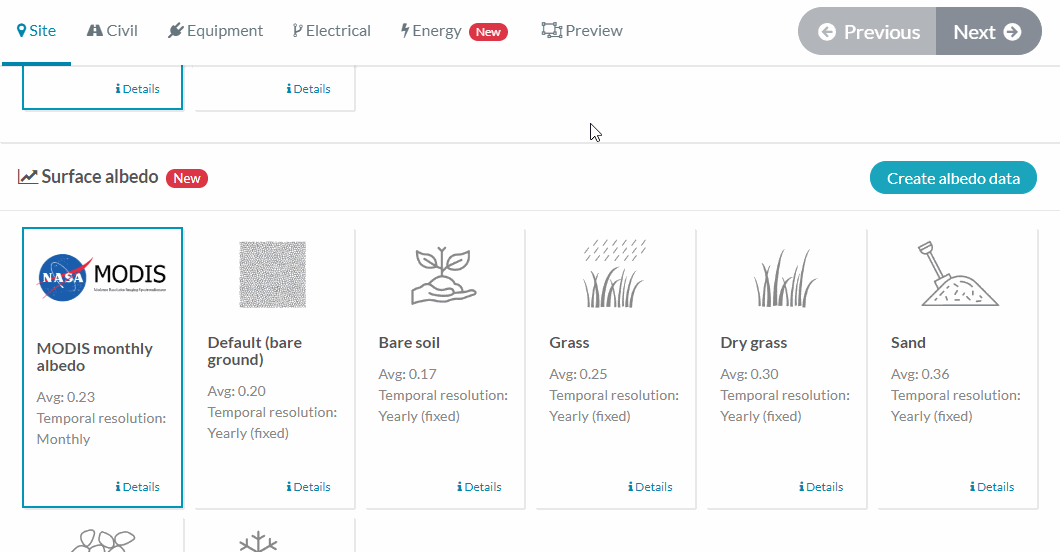Bifacial energy yield simulation
pvDesign - version 3.15.0
Big Launch 🚀- BIFACIAL ENERGY YIELD SIMULATION
For the past months, we have been working to bring some huge new features to pvDesign. We are continuously improving the core of the pvDesign layout calculation module so that the quality of our layouts will be enhanced.
The bifacial energy simulation is the first of many new big software features which we are going to release in the next months.
Below is a description of the new features included in this release:
- Bifacial energy yield simulations: The energy module can now calculate the production of bifacial modules. The software calculates the back-face irradiance using a configuration factor model. The back-face irradiance is added to the front-face irradiance weighted by the module bifaciality factor.

- Improved monofacial simulations: The algorithm used to calculate the ground reflected irradiance is also used in all monofacial simulations to calculate ground reflections. This will result in accuracy improvements for all simulations. The minimum ground clearance is now always required.
- Create your own albedo data: It is now possible to create your own albedo data in monthly resolution for use in the energy yield simulation.

- New IAM loss models: It is now possible to choose the IAM profile for the energy yield simulation. The IAM profile found in the module PAN file now available, alongside the air-glass models. The IAM profile selector is in the energy tab under the section "Advanced parameters"
- More detailed energy reports: The energy report and the energy results file contain improved sections for displaying the bifacial results. The bifacial results are also shown in the energy tab in the design results
- Updated energy methodology report: The new bifacial simulation methodology is comprehensively documented in the energy methodology report.
Improvements and bug fixes
We made the following bug fixes and improvements:
- We changed the calculation of AC cable losses in the energy model. It now uses the maximum admissible voltage drop instead of a cable from the layout, which should yield more predictable results.
- We added the UTM zone name and EPSG code to the site details modal.
- We changed the inverter OND file importer so that it can accept files which previously resulted in an error.
- We fixed a bug which caused some KML file uploads to fail unexpectedly because of missing location data.
